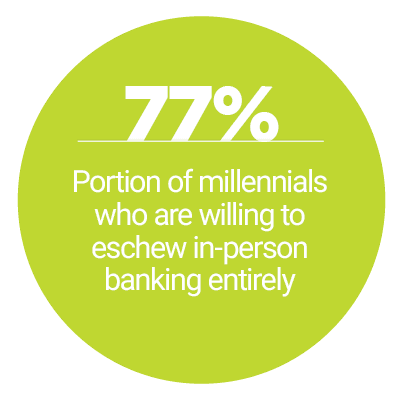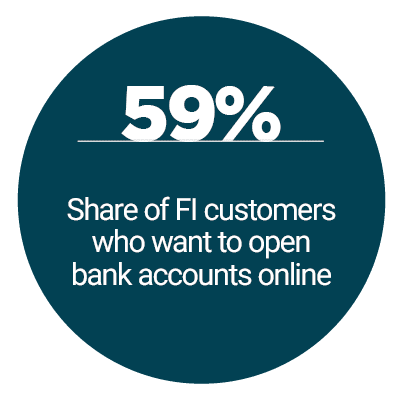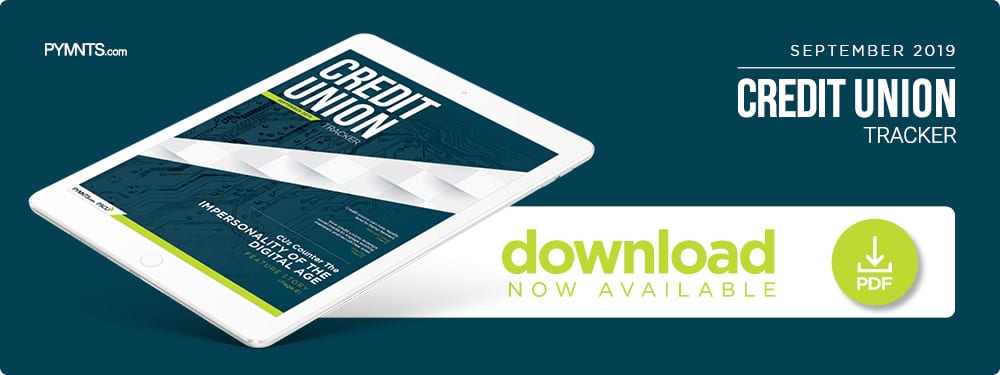TRENDING: How Credit Unions Give Digital the Personal Touch

Credit unions (CUs) are facing an ever-shifting financial services landscape. Advanced technology is increasingly raising the stakes of how CUs should operate, with members coming to expect the instant payments and slick mobile interfaces that large banks and FinTechs have made standard. CUs are facing pressure on the regulatory side as well, with banking advocacy organizations like the American Bankers Association (ABA) pressuring federal regulators to block rule changes that would help CUs compete with large banks.
The industry remains strong in the face of these challenges, however. A study from the Cuna Mutual Group found that CU membership has increased 3.5% within the past year, total assets have risen 6.4% and total deposits by 6.9%. The total number of CUs in the United States has decreased by 177 year-over-year, though, a sign that CU mergers and consolidations have concentrated more members in a smaller number of CUs.
In the September “Credit Union Tracker,” PYMNTS explores the latest in the world of CUs, including friction between CUs and the ABA, the increasing importance of social media for member engagement, and how CUs are regaining their personal touch in an increasingly digital world.
Developments From Around the Credit Union Space
More diverse communities are being served by CUs than ever before, with the state of Michigan recently approving the nation’s first LGBTQ-focused CU, Superbia Credit Union. The financial institution (FI) plans to offer products that are often unavailable at other CUs, such as loans for transition-related h ealthcare costs for transgender individuals, and it will offer its first online services next year.
ealthcare costs for transgender individuals, and it will offer its first online services next year.
CUs are expanding their reach to previously underserved marketplaces, too, thanks to a relaxation of hemp-related laws. Federally insured CUs in the U.S. can now provide financial services to legal hemp farmers and businesses. New guidance published from the National Credit Union Administration (NCUA) lifts the requirement to file suspicious activity reports for hemp farmers, granting them access to CU services without oversight.
The CU space is not all rosy, however. Dan Berger, chief executive of the National Association of Federally Insured Credit Unions (NAFCU) recently wrote a letter to the House Financial Services Subcommittee on Oversight and Investigations, claiming that the ABA was the secret owner of an anti-CU propaganda website. The site was taken down shortly after the letter was issued to Congress, but ABA claimed the takedown was unrelated.
For more on these and other CU news items, download this month’s Tracker.
How Digital-First CUs Can Break the Impersonality Barrier
Investments in digital banking are paying dividends for CUs by improving membership and creating more efficient services. Allison Videtti, director of marketing for digital-focused Alliant Credit Union, believes it has come at the cost of personal touch.
For this month’s Feature Story, Videtti spoke to PYMNTS about how Alliant emphasizes member outreach by employing targeted social media campaigns to regain personalization and stay involved in members’ lives.
Deep Dive: How CUs Leverage Social Media
Seventy-two percent of Americans use social media, making it a fertile ground for FIs to market and connect with their customers. Nearly 97% of FIs are on Facebook, 76% on LinkedIn and 59% on Twitter, but this presence is not without its drawbacks. CUs active on social media risk alienating customers with too-aggressive advertising.
This month’s Deep Dive explores how CUs can leverage social media to engage with their members, and how irritating ads and strict regulations could hamstring their outreach efforts.
About the Tracker
The “Credit Union Tracker,” done in collaboration with PSCU, is your go-to monthly resource for updates on trends and changes in the credit union industry.

